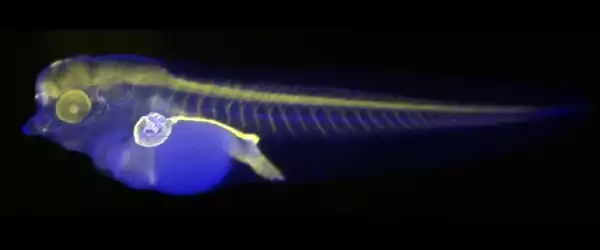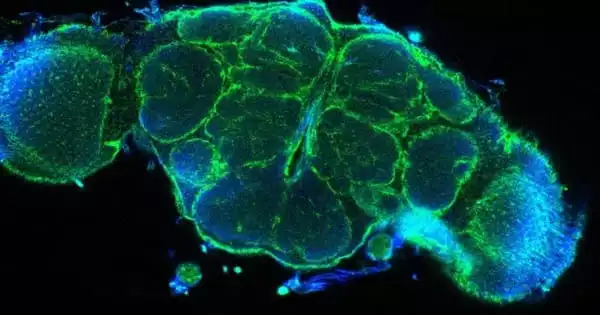CRISPR technology and deep learning systems were used by researchers to look into the genes linked to polycystic kidney disease. The tiny tropical frog Xenopus tropicalis was used by researchers at the University of Zurich, Switzerland, to model human genetic diseases, specifically autosomal dominant polycystic kidney disease, in order to further research into therapies for the disease.
With the help of tropical frogs, researchers created a model to study hereditary kidney disease using cutting-edge genetic engineering. They can collect large amounts of data on anomalies using this method, which can then be analyzed using artificial intelligence. The study opens up new avenues for the search for new treatment approaches for the previously incurable disease.
The anatomy and organ function of frogs are strikingly similar to that of humans. An international team led by Soeren Lienkamp, professor at the Institute of Anatomy at UZH, has now used this similarity to model human genetic diseases using a tiny tropical frog called Xenopus tropicalis. Polycystic kidney disease, a congenital and currently incurable form of progressive kidney deterioration, was studied and replicated in frogs.
Our novel frog models develop cysts in the kidneys in just a few days, allowing us to observe these disease processes in real-time for the first time. The findings from the frog models will provide new insights into the early processes of polycystic kidney disease, which will serve as the foundation for developing new treatment approaches for affected patients.
Dr. Thomas Naert
While most genetic studies are conducted on mice, frogs can lay hundreds or even thousands of eggs, making them ideal for larger-scale studies. Large numbers of Xenopus tropicalis tadpoles can be manipulated in the lab to develop cystic kidney diseases.
The scientists used CRISPR/Cas9 to target genes known to be involved in cystic kidney disease. “Our novel frog models develop cysts in the kidneys in just a few days, allowing us to observe these disease processes in real-time for the first time,” lead author Dr. Thomas Naert explained.

Observing disease processes in real-time
The scientists used CRISPR/Cas9, a method for turning off gene function, to target genes known to be involved in cystic kidney disease. “Our novel frog models develop kidney cysts in a matter of days, allowing us to observe these disease processes in real-time for the first time,” says lead author Thomas Naert. While most genetic studies are performed on mice, frogs have features that make them well-suited for larger-scale studies.
“A single frog couple can lay hundreds or even thousands of eggs,” explains Naert. “That’s why there are so many tadpoles in the Swiss lakes in the spring.” Similarly, large numbers of Xenopus tropicalis tadpoles can be manipulated in the laboratory to develop cystic kidney diseases.
AI analyzes data from light-sheet microscopy
To analyze the data from so many animals, the researchers used a technique known as light-sheet microscopy, which produced a 3D reconstruction of the entire tadpole and all of its organs. Light-sheet techniques, like magnetic resonance imaging, allow researchers to see through tissues in tadpoles to locate diseased organs. The collected data was then processed with artificial intelligence to enable rapid, automated disease assessment. “Whereas it used to take my team several days or even weeks to analyze data from hundreds of tadpoles, artificial intelligence can now do it in a matter of hours,” Lienkamp says.
To examine the data from such a large number of animals, the researchers used light-sheet microscopy, which resulted in a three-dimensional (3D) reconstruction of the entire tadpole and all of its organs. The collected data, which was published in Development, was then processed with artificial intelligence (AI) to allow for rapid, automated disease assessment. “Whereas it would normally take my team several days or even weeks to analyze data from hundreds of tadpoles, AI can now do this task in a matter of hours,” explained the study’s lead researcher, Professor Soeren Lienkamp.
According to the researchers, the findings from the frog models will provide new insights into the early processes of polycystic kidney disease, which will serve as the foundation for developing new treatment approaches for affected patients.
The findings from these frog models provide new insights into the early processes of polycystic kidney disease. These discoveries will serve as the foundation for the development of new treatment approaches for affected patients.















